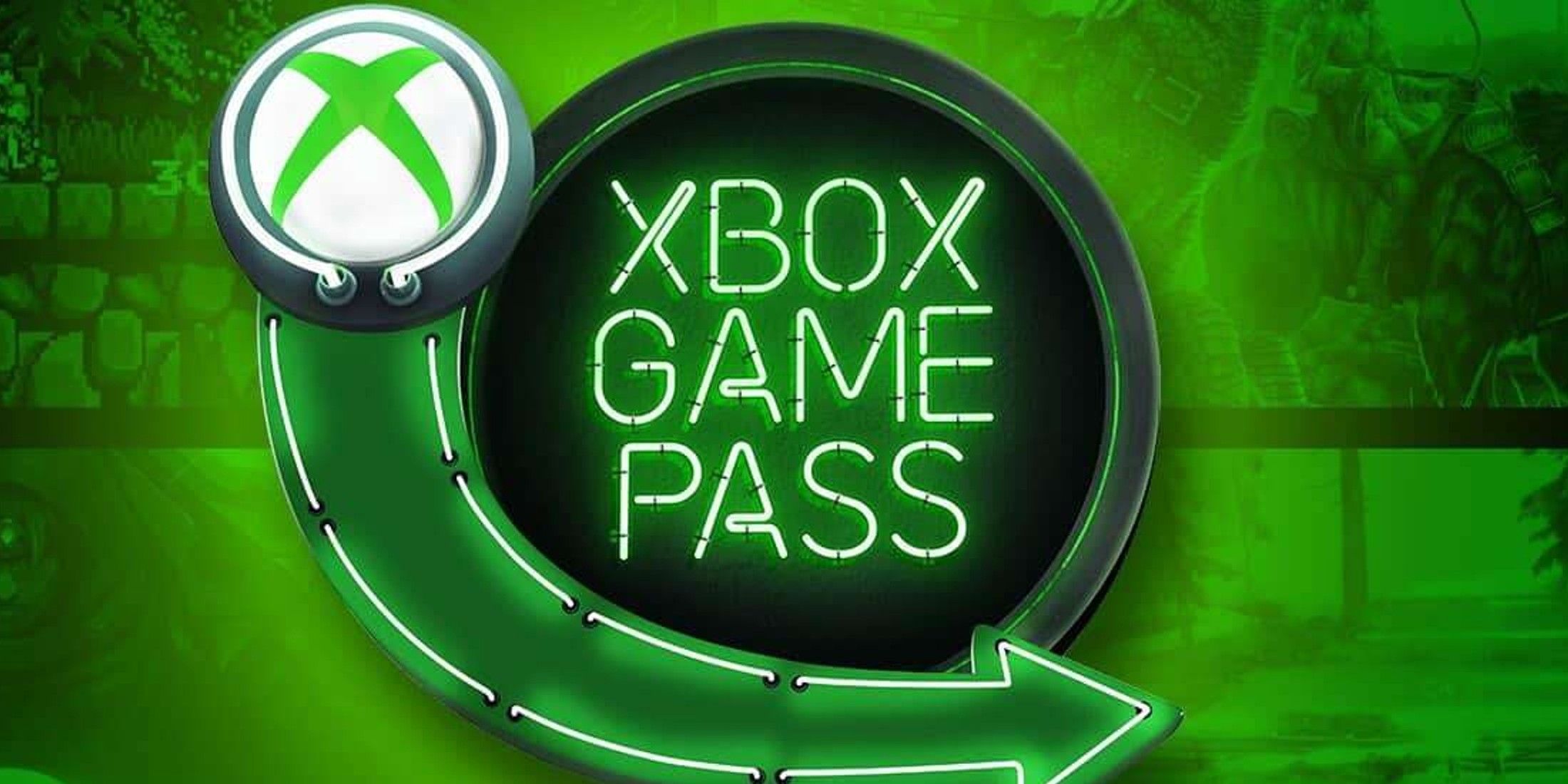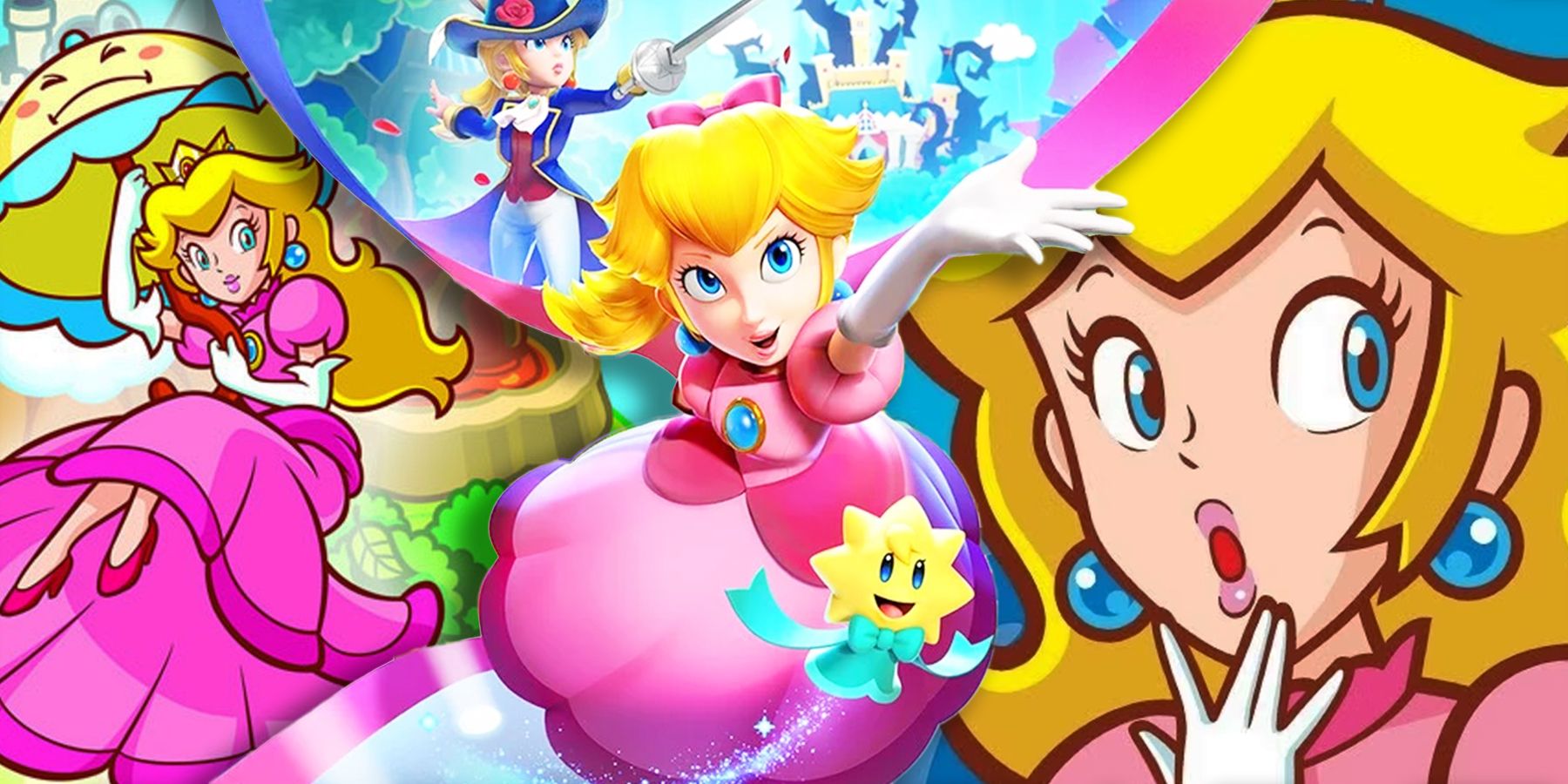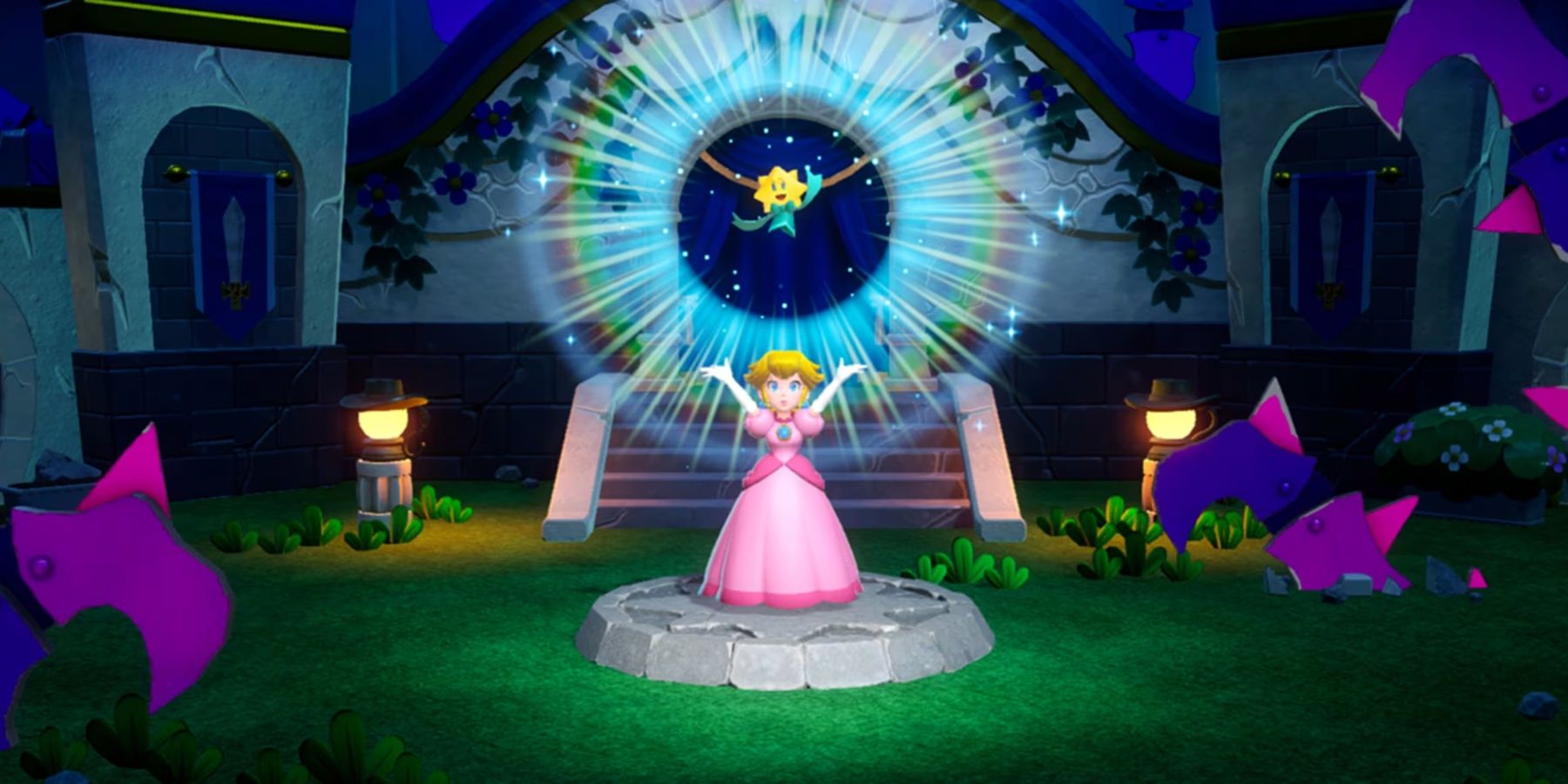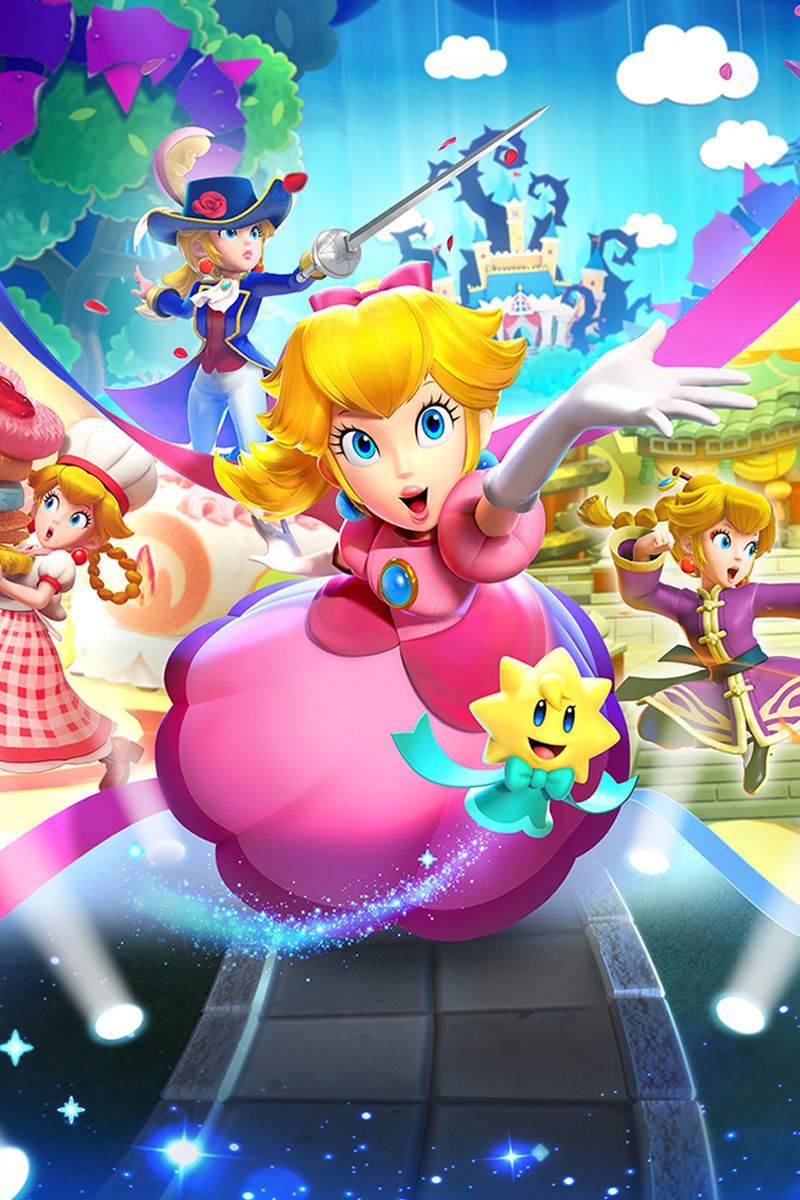Highlights
- Princess Peach's two games, Super Princess Peach and Princess Peach: Showtime, offer unique adventures within the Mario universe.
- Princess Peach: Showtime builds on Super Princess Peach's foundation, introducing new mechanics like multiple transformations and a theater setting.
- The game sets itself apart from traditional Mario games by featuring new NPC allies, original villains, and a theater-themed aesthetic.
Despite being one of the most iconic princesses in gaming, Princess Peach has only ever been the star of two games: Super Princess Peach and now Princess Peach: Showtime. While both of these titles share some similarities as platformers within the Mario universe, Super Princess Peach and Princess Peach: Showtime depict two very different adventures for the princess. The result is two games that showcase different sides of Princess Peach, and it is evident through Princess Peach: Showtime's gameplay that the game builds off of the foundation established by Super Princess Peach.
Peach's first starring role came in the form of Super Princess Peach, released for the Nintendo DS in 2006. This title followed many of the traditional conventions of a Mario platformer, with the added twist of Peach's companion, an umbrella named Perry, and the power of her vibe abilities. Nearly 20 years later, Peach finally returns to the spotlight with a starring role in Princess Peach: Showtime in an adventure that is a seemingly drastic departure from her previous outing but is one that still incorporates some underlying mechanics of the mainline Mario series and Super Princess Peach.
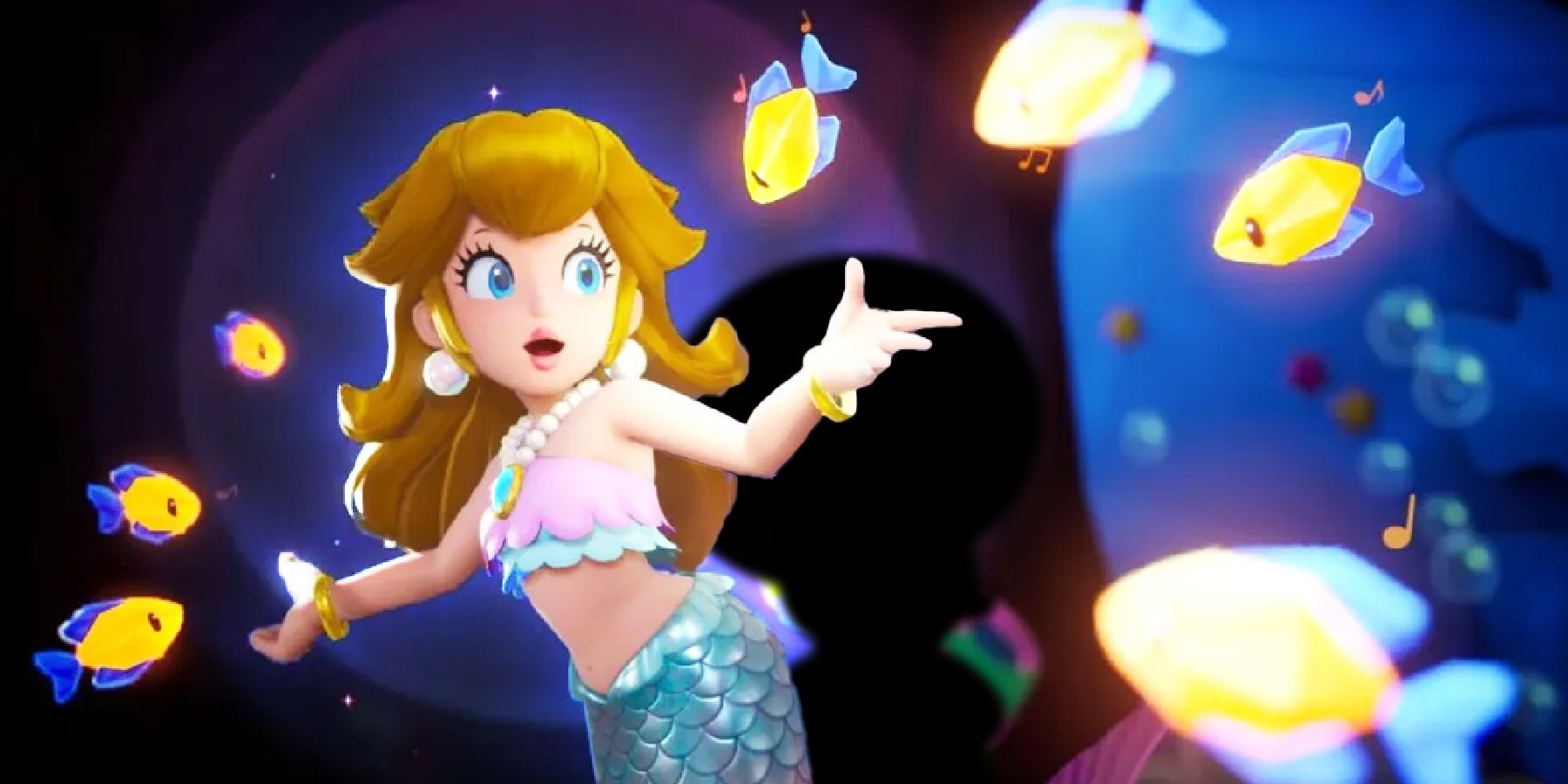
Princess Peach: Showtime Missed the Opportunity to Bring Back One Forgotten Mario Character
Princess Peach: Showtime features a cast of mostly new faces, but would have been the perfect chance to bring back one of her closest companions.
How Princess Peach: Showtime’s Mechanics Improve Upon Super Princess Peach’s
The core gameplay of Super Princess Peach follows a fairly standard formula for Mario platformers, but adds in the twist of Peach's vibe powers that allow her to traverse levels, solve puzzles, and deal with the enemies players encounter. There are four vibe powers that Peach can utilize: Joy, Rage, Gloom, and Calm, each needing enough energy in Peach's Vibe Gauge before they can be activated. In addition to her vibe abilities, Peach's companion Perry is able to transform into different tools to aid the princess, including a boat, a submarine, and even a laser.
Given its release on the Nintendo DS, Super Princess Peach was able to make use of the handheld's touchscreen to activate the vibe abilities. Conversely, Princess Peach: Showtime doesn't do much to take advantage of the Switch's unique hardware capabilities.
Compared to these powers in Super Princess Peach, Princess Peach: Showtime gives the princess a wider range of abilities due to the many transformations she has access to within the stages of Sparkle Theater. While Peach has access to 10 primary transformations, including Swordfighter, Cowgirl, Patissiere, Ninja, Detective, Dashing Thief, Kung Fu, Figure Skater, Mermaid, and Mighty Peach, each of these transformations is limited to their specific stages. However, it's clear there is some level of inspiration drawn from Super Princess Peach's vibe abilities in these transformations, as they each offer a unique way of interacting with their specific levels.
Princess Peach: Showtime Sees Peach in a Brand-New Context
One of the most apparent differences between Super Princess Peach and Princess Peach: Showtime is the context that the two games are set within. Super Princess Peach follows the fairly standard Mario series when it comes to its level themes, featuring environments based on grasslands, forests, volcanoes, beaches, and eventually, Bowser's Castle. Meanwhile, Princess Peach: Showtime commits to its theater aesthetic, with each level taking place within a uniquely-themed play, creating distinct yet cohesive worlds that stand out from the rest of the Mario franchise in their designs.
While Super Princess Peach sticks to the standard Mario enemies and bosses fans of the series are already familiar with, Princess Peach: Showtime shakes things up by introducing new NPC allies in Sparkle Theater's resident Theets, as well as Grape and the Sour Bunch as the game's original villains. It's also important to note that while Super Princess Peach's plot involves Bowser kidnapping Mario and Luigi, the bros are nowhere to be found in Princess Peach: Showtime. These deviations from Super Princess Peach and the Mario franchise as a whole allow Peach to develop her own identity in a stand-alone title.

